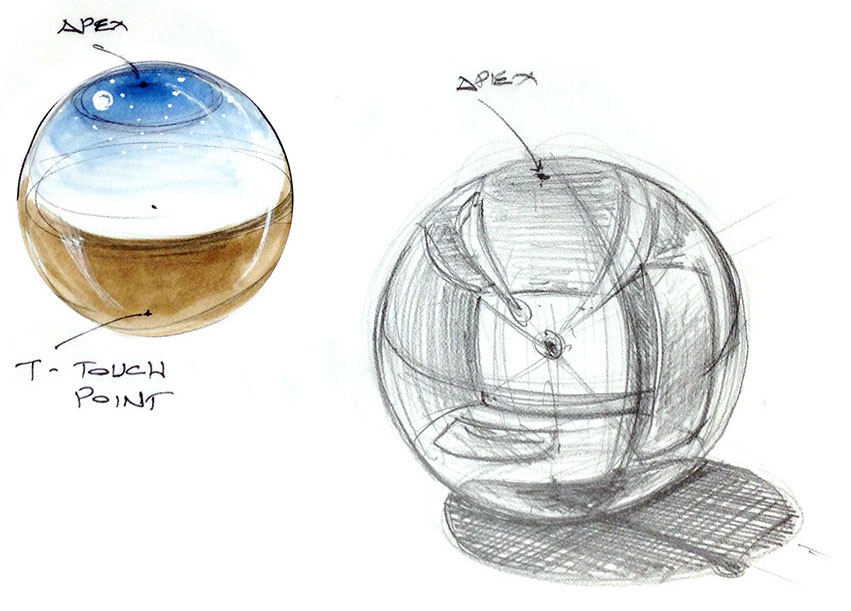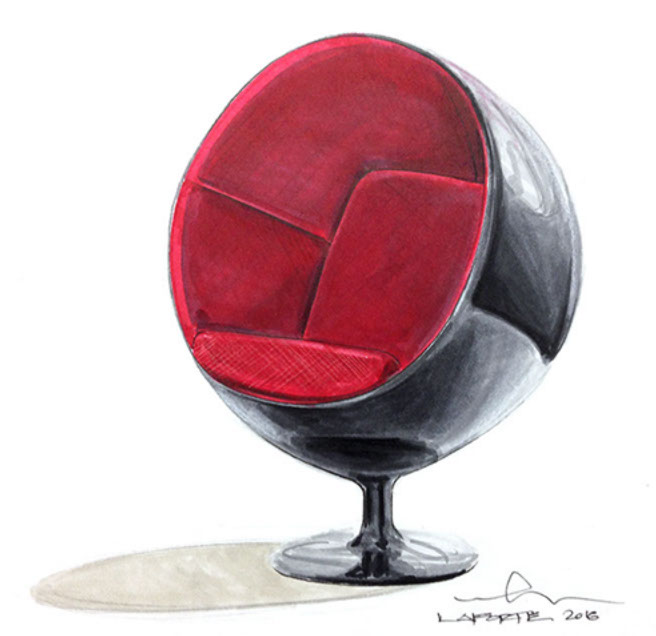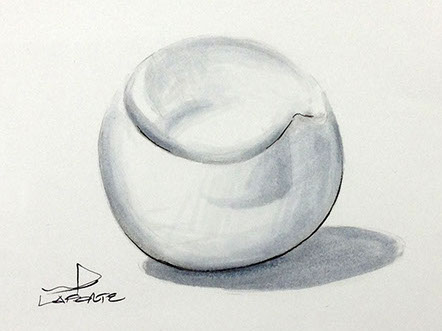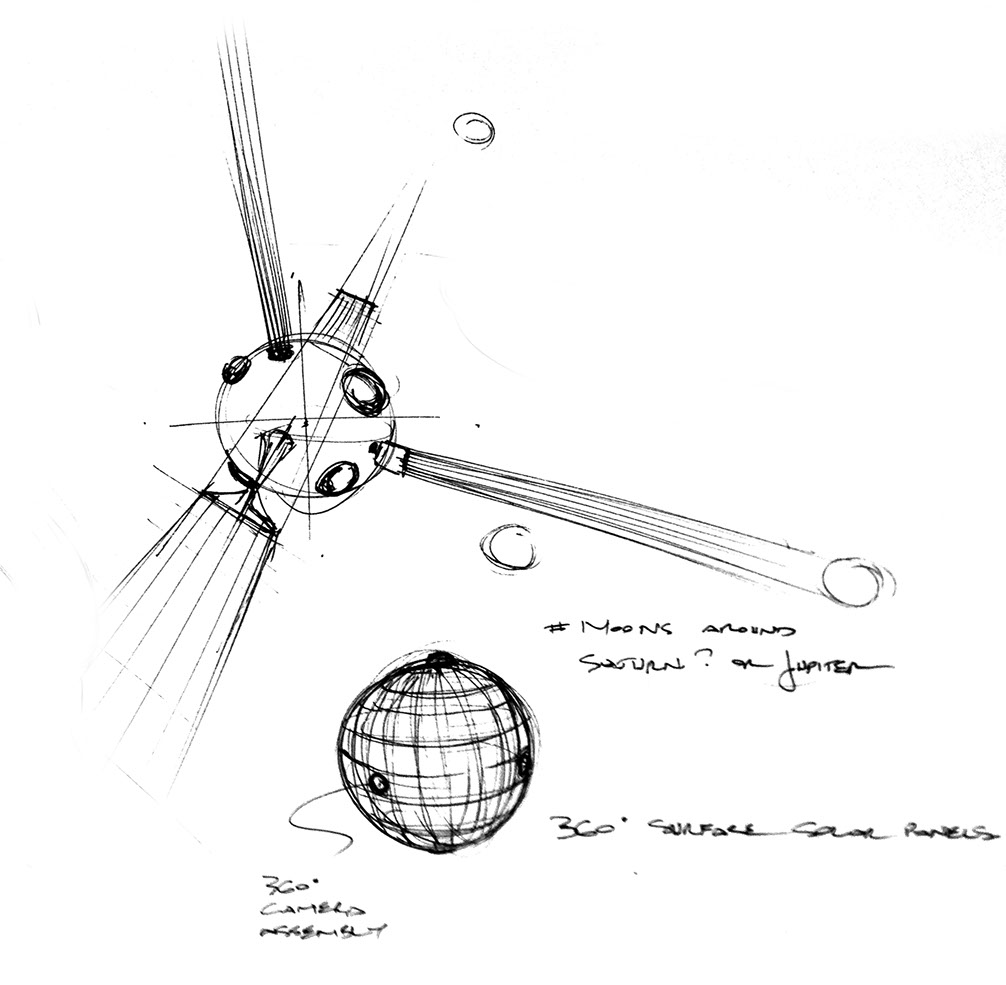
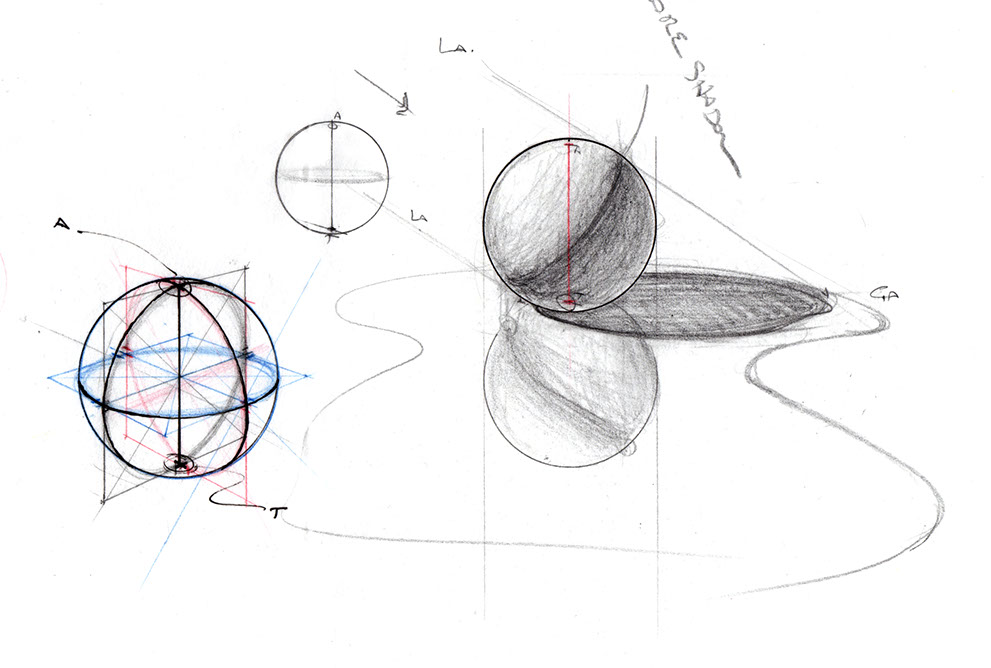
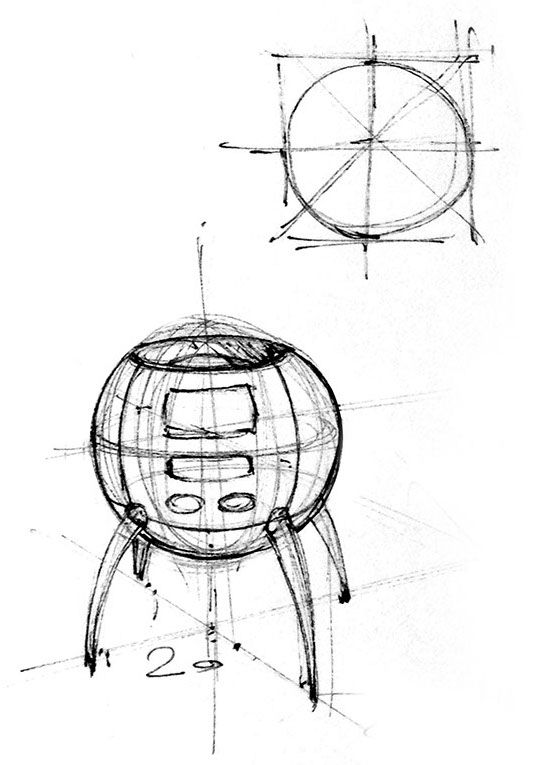
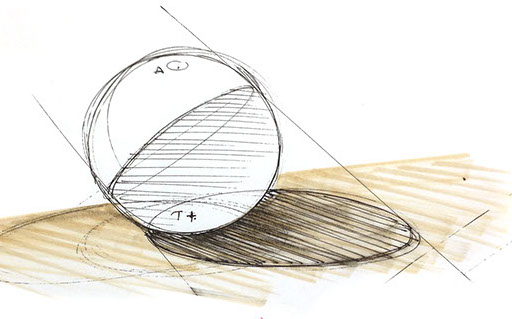
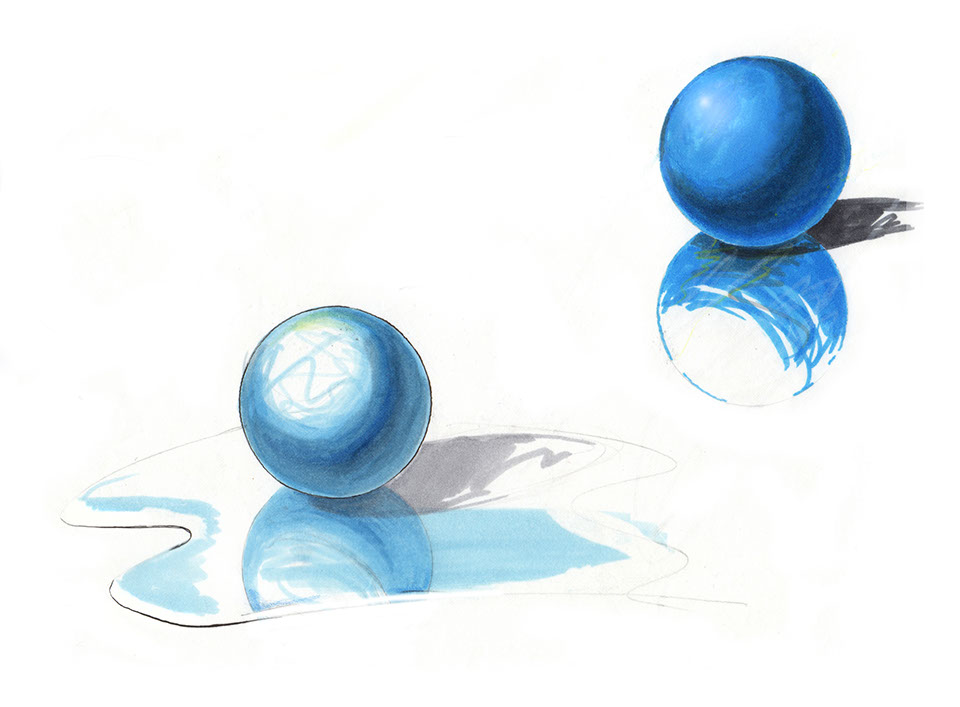
T - Touch Point.
The point under the form, past the profile edge, where the form is actually resting on the surface.
Sketch an ellipse through the sphere, aligned perpendicular to the Light Angle.
For Parallel Shadows, use a relatively flat ellipse and use the lower arc to define the core shade/shadow.
For Positive Light Shadows, the shadow is coming toward us, then use the upper arc for the core shad.
For Negative Light Shadows, the shadow is moving away from us, then use the lower arc, and a more open/round ellipse if necessary.
A - Apex
The point at the high point of the sphere, like the North Pole.
LA - Light Angle. The angle at which your light source is coming from.
Core Shade or Core Shadow.
GA - Ground Angle
Vertical lines and edges translate horizontally across the ground, coming from the light source direction.
TUTORIALS & HOW-TO GUIDES
When designing a piece of furniture, lamp, or helmet, work from a sphere, with slight modification.
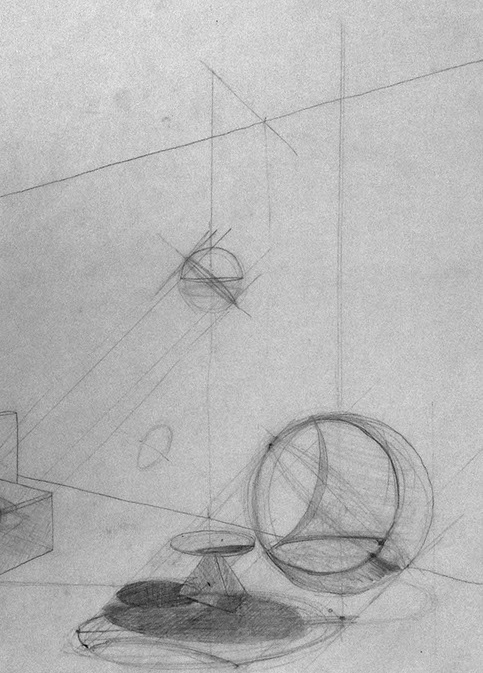
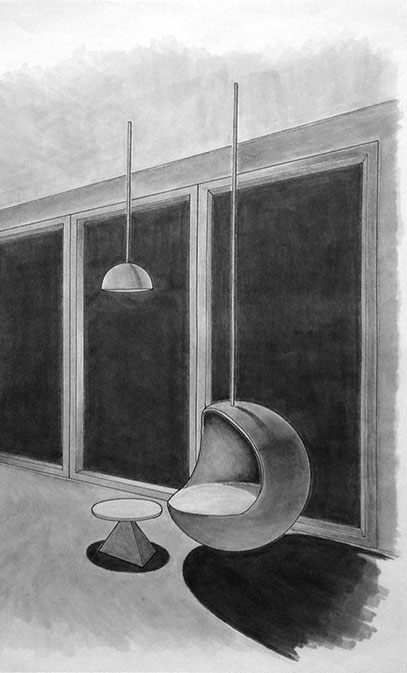
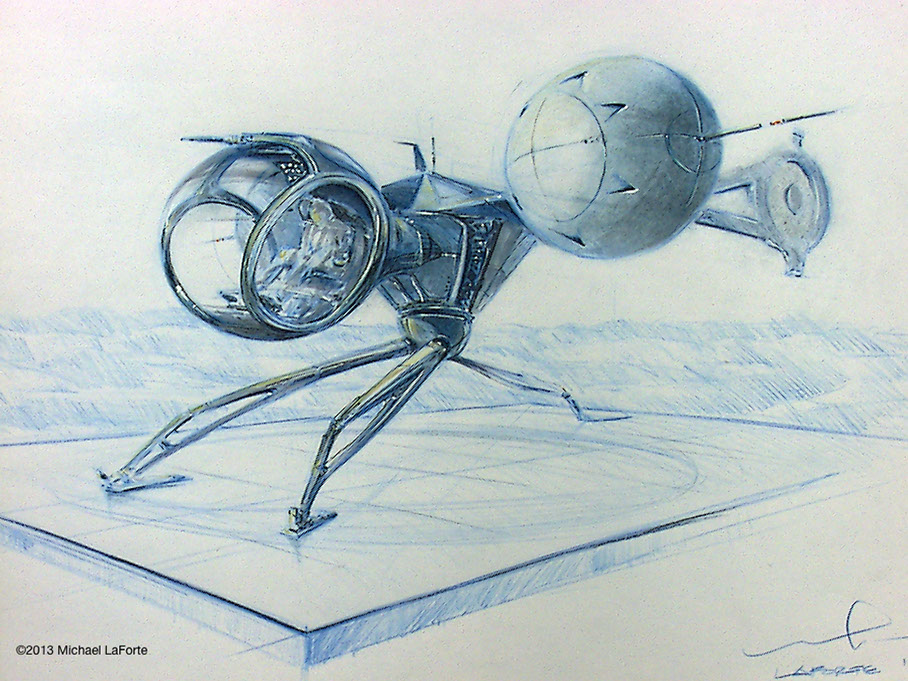
TORUS AND SPHERE-LIKE FORMS
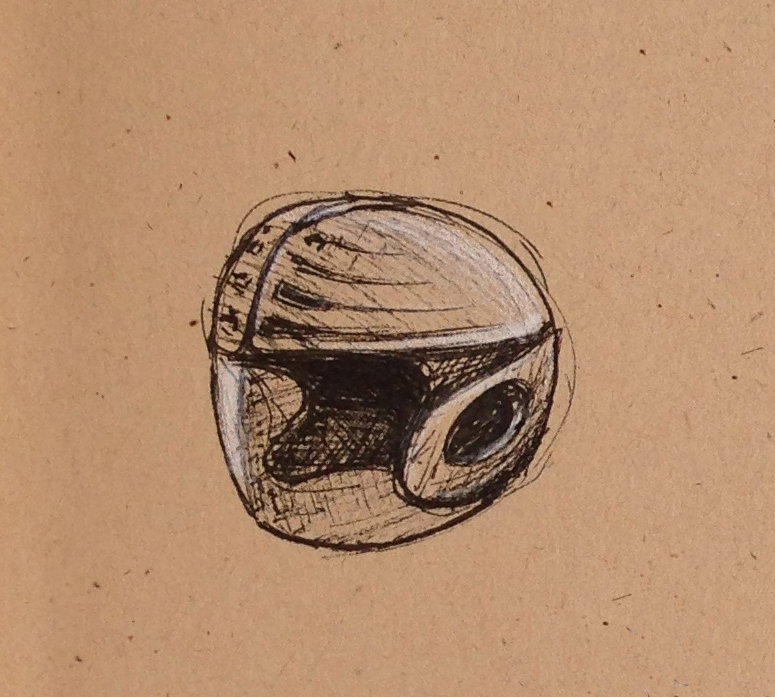
A helmet can be easily approached from thinking of a sphere
or egg-like form.
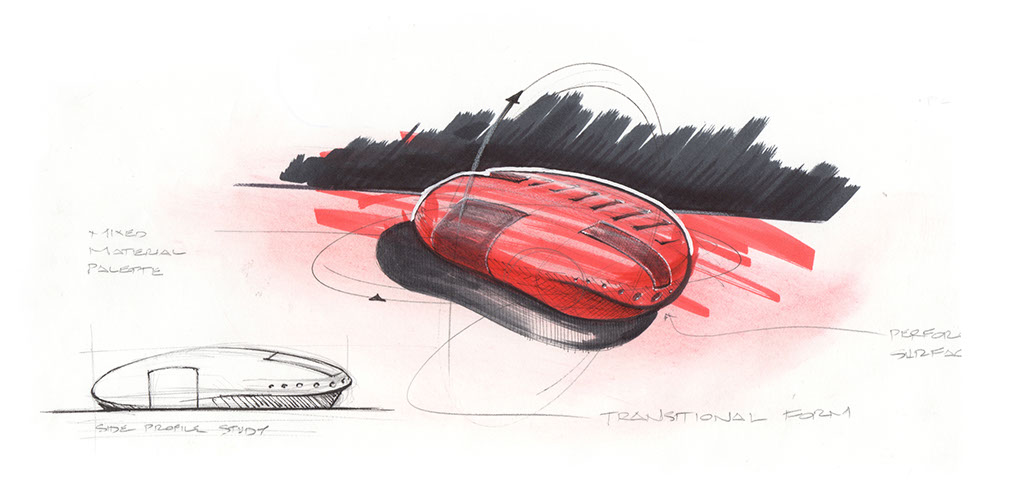
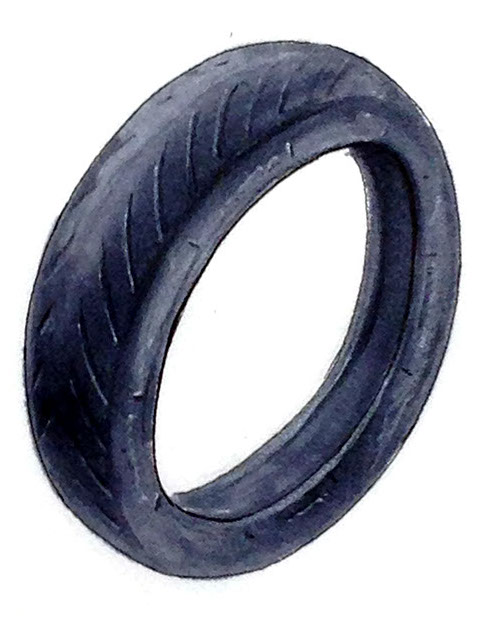
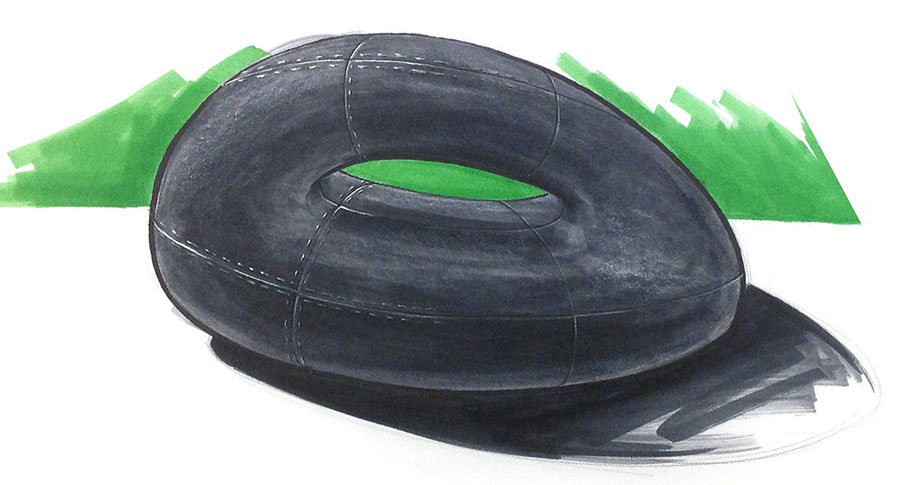
Remember there's
no such thing as Black
(or white), there are only
values in a dark (or light)
spectrum. There must always be
a Core Shade Value, Highlights, and even
Bounced Light or Reflected Light on the surface
area rolling down under the form. This light is
reflected light from the table or base plane.
One of the more common places to apply this logic is in rendering tires that have a very high dome profile, such as a motorcycle slick street tire.
This form study below is based on the Torus, the donut-like geometry.
* Estimate only. See instructor and calendar for specific due dates. Summer Session schedule is more compressed with one week equal to approximately two and half semester weeks.
CSULB | COTA | DEPARTMENT OF DESIGN | BIO

Questions, feedback, suggestions?
Email me with your recommendations.
©2020 Michael LaForte / Studio LaForte, All Rights Reserved. This site and all work shown here is purely for educational purposes only. Where ever possible student work has been used or original works by Michael LaForte.
Works by professionals found online or in publication are used as instructional aids in student understanding and growth and is credited everywhere possible.
